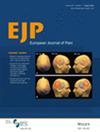Exploring the Spectrum of Temporal Summation and Conditioned Pain Modulation Responses in Pain-Free Individuals Using a Tonic Heat Pain and Cold Pressor Test Paradigms
Abstract
Background
Temporal summation (TS) and conditioned pain modulation (CPM) are impaired in many chronic pain individuals, although typical TS and CPM responses remain unclear. Providing a quantile distribution of TS and CPM values could help determine whether TS and CPM responses fall outside the usual ranges, thereby informing pain management strategies. The objective of this study was to provide a response distribution for these mechanisms in a large, pain-free cohort.
Methods
Pain-free participants (n = 347) were evaluated. TS was interpreted as the change in pain perception scores during a constant heat pain stimulus. CPM was assessed by the difference in pain perception scores induced by a tonic heat pain stimulus and a mechanical pain threshold, before and after a cold pressor test (CPT). Quantile regression was performed to identify the 5th to 95th percentiles, with a specific focus on the 75th, 90th and 95th percentiles and their confidence intervals, while considering age and sex.
Results
Analyses revealed a particularly large range of TS and CPM responses, spanning from strong inhibition in CPM and strong summation in TS to moderate or even null effects. Notably, some responses deviated from the expected patterns, with certain individuals exhibiting hyperalgesic CPM effects and others displaying hypoalgesic TS responses. The highest percentiles of the TS distribution were influenced by age and gender, while CPM scores remained unchanged.
Conclusion
The results of this study provide an overview of the possible spectra of responses for TS and CPM, potentially paving the way for their incorporation into pain management strategies.
Significance Statement
This study examines the spectrum and provides a distribution for TS and CPM values to better identify what may constitute a deficit in these mechanisms and enhance their clinical interpretation.
Trial Registration
clinicaltrial.gov identifier: NCT03376867


 求助内容:
求助内容: 应助结果提醒方式:
应助结果提醒方式:


